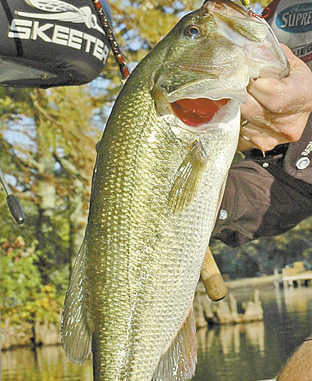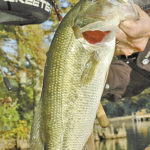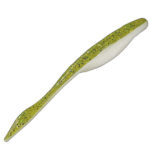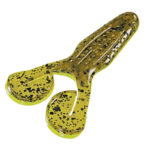
Follow this angling advice to put untapped fish in the boat this month.
One of the reasons Cataouatche is my lake of choice during September is because the bass are very dependable there during this time.
I also like it because it’s a confidence builder. I want to go into the 2011 Bassmaster Classic with as much confidence as I can. You can expect to catch a lot of bass, but probably not really big bass. The water is hot in September, and the oxygen level is about at its lowest point, which makes the bass very predictable. The bass must hold in places with plenty of moving water and more oxygen.
Early morning bass
Early in the morning, you can fish the grass beds in the main lake and get a good topwater bite when fishing for schooling bass. Even though the weather still will be hot, bass can feel that fall’s coming, and they’re beginning to school up. You’ll start seeing some surface activity as schools of bass bust the surface and chase bait.
By fishing the edges of the grass early in the morning with a Strike King Rage Toad or a Strike King Spit-N-King, I’ll cover a lot of water, have numbers of bites and catch plenty of bass.
Schooling bass will appear out of nowhere. Also, diving birds will tell me where the bass are, and where they’re most likely to come to the surface. I’ll always have tied to one of my rods a 1/2-ounce Red Eye Shad in the chrome sexy shad color because it has a lot of flash and triggers schooling-bass strikes. I can make long casts to those schooling bass with this lure.
I like the chrome/blue or chrome/black Spit-N King when I want to strictly fish a topwater bait. I fish it really fast and don’t just pop it and let it hold still on the water. I keep the Spit-N-King moving, so it will spit. I want to make that lure look like a baitfish trying to escape.
When I’m fishing the Rage Toad in the early morning, I’ll hold my rod tip up at about the 11:00 position and reel down and take up slack before I set the hook to give the bass time to get the bait all the way into its mouth.
Another bait I like to fish in September really fast on the surface is the Caffeine Shad, preferably in the blue glimmer, pearl or shad colors, outside a grass line in 4, 5 or 6 feet of water and around the hydrilla beds in the mouths of the cuts and on the points. I’ll search for the places where the water’s moving.
Since the bass will gang up in schools to ambush bait, I’ll fish the Caffeine Shad on a weightless hook with a high-speed retrieve reel to keep the bait close to the surface. Often, I’ll tie the Caffeine Shad straight to 20-pound-test fluorocarbon line — particularly in very clear water. However, if I’m fishing on the edge of really dense grass in dingy water, I’ll have 50-pound-test braided line on the reel and then tie a 3-foot, 25-pound fluorocarbon leader to it.
I’ll use a three-jerk-then-pause rhythm of retrieve — jerk, jerk, jerk, pause, jerk, jerk, jerk, pause. When the bass attack, they’ll either blow-up on the bait or boil the water. I’ll actually see the strikes. But I need to feel the bass and give it a chance to gulp that bait before I try and set the hook.
Midday to late afternoon
If there’s a little wind on the water, I’ll continue to fish the Red Eye Shad on schooling bass, but will allow it to sink deeper in the water, before I start my retrieve.
Usually, when the sun comes up, on a bright clear day, I know that the bass probably will bury deep in the grass. I’ll start pitching and flipping the Strike King Rodent or the Denny Brauer Flip-N-Tube in black/red flake. I’ll usually have a 1/2-ounce or larger Tru-Tungsten sinker in front of the tube to punch through the grass.
Under certain situations, when I know the bass are feeding on baitfish, I’ll flip a white tube to cause the bass to think that the white tube is just a baitfish shooting through the grass. When I fish the tube, I’ll be fishing really fast and flipping the lure to the edges of the grass, letting it pause on the bottom, reeling it up and making another pitch, instead of punching it through the grass. If the bass see it, they’ll either attack it on the fall or not attack it at all.
During September, I expect 90 percent of my bites to occur when the bait’s falling, because this month most bass, even when they’re in the grass, will be suspended and not interested in a bait that’s on the bottom. I’ll alternate fishing the tube and the Rodent on 50-pound-test braided line with a fluorocarbon leader.
Last year in September, I averaged 25 to 40 bass bites in a single day, and occasionally caught a 4-pounder at Cataouatche. But most of the bass there will weigh 1 to 3 pounds. Good luck, and I hope to see you on the water.





